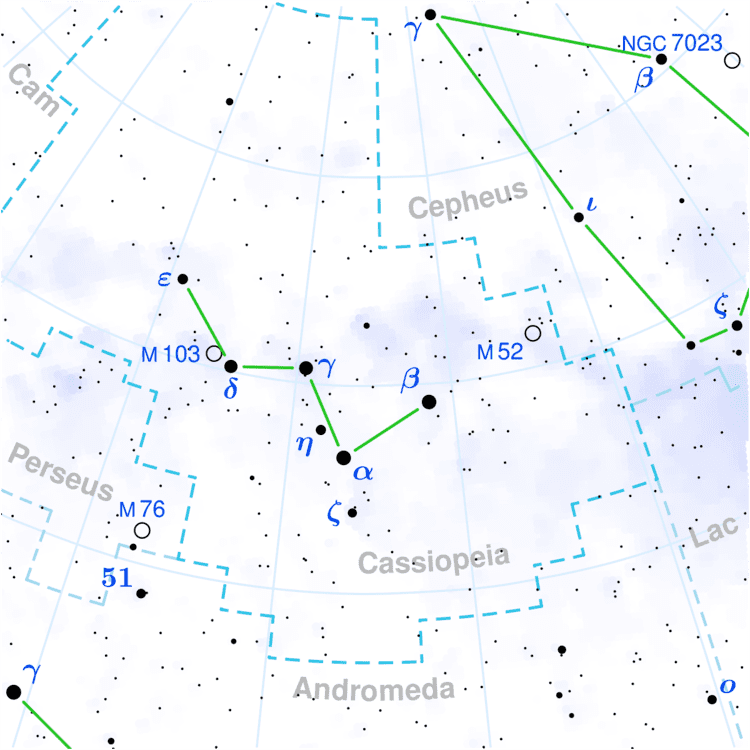Magnitude 3.666 Apparent magnitude (V) 3.666 | ||
 | ||
Similar Delta Cassiopeiae, Gamma Cassiopeiae, Omicron Cassiopeiae, Lambda Cassiopeiae, Beta Cassiopeiae | ||
Zeta Cassiopeiae (ζ Cas, ζ Cassiopeiae) is a star in the constellation Cassiopeia. It has a blue-white hue and is classified as a B-type subgiant with an apparent magnitude of +3.66. It is approximately 590 light years from Earth.
Contents
Properties
ζ Cas is B2 subgiant, indicating that it has exhausted its core hydrogen and started to evolve away from the main sequence. It has a temperature of over 20,000 K, is about eight times the mass of the sun, and is 5,500 times as luminous.
Variability
ζ Cas is a probable member of an unusual group of variable stars known as "Slowly Pulsating B" (SPB) stars. It shows a pulsation frequency of 0.64 per day (or once every 1.56 days) and displays a weak magnetic field with a strength of roughly 3.35 × 10−2 T, which varies with a period of 5.37 days. This likely matches the rotation rate of the star, which, when combined with the low projected rotational velocity, indicates the star may be seen nearly pole-on. Zeta Cassiopeiae is a candidate magnetic Bp star that shows an overabundance of helium. The star contains a randomly oriented fossil magnetic field, which impacts the outflow of the stellar wind. Collisions between streams from this stellar wind creates a shock front, with cooling particles settling toward a co-rotating disk.
Chinese name
In Chinese astronomy, Zeta Cassiopeiae is called 附路, Pinyin: Fùlù, meaning Auxiliary Road, because this star is marking itself and stand alone in Auxiliary Road asterism, Legs (mansion) (see : Chinese constellation). 附路 (Fùlù) is westernized into Foo Loo, but the name Foo Loo was designated not only for Zeta Cassiopeiae, but also for η Cassiopeiae (Achird) by R.H. Allen, with the meaning is "a by-path"
